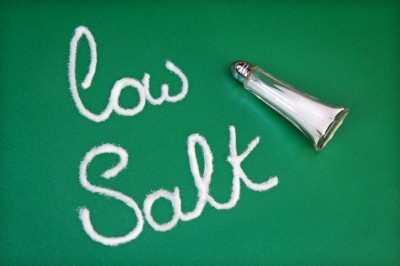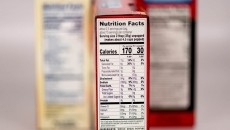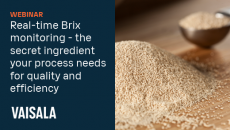Sodium reductions detailed at meeting of stakeholders called both significant and insufficient

Some progress on the issue was reported at the meeting, progress that was characterized as significant or insufficient depending on the point of view.
The meeting between the Grocery Manufacturers Association (GMA), the National Restaurant Association (NRA) and the Center for Science in the Public Interest (CSPI) brought together food industry leaders, health professionals and government officials to discuss the progress and challenges of reducing the sodium content in food products in an effort to help consumers meet the 2010 Dietary Guidelines of 2,300 mg of sodium per day.
CSPI: We are not satisfied
No conclusions were drawn nor agreements made, said one of the participants, Michael Jacobsen, executive director of CSPI.
“The purpose of the meeting was to share information about progress and challenges in reducing sodium levels. It was very useful meeting. There were a lot of good discussions,” Jacobsen told FoodNavigator-USA.
But, Jacobsen said, “We are not satisfied. We think the Institute of Medicine proposed the one approach that would drive sodium levels down the fastest, and that is FDA limits on sodium levels on various categories of foods.”
Despite his organization’s frustration with the pace of change, Jacobsen did acknowledge that some progress has been made.
“Some of the big companies are reporting maybe 10% or 15% sodium reduction. Nestlé has said it has reduced its overall lines by 25%. McDonald’s is working on it; with some products they’ve had success. It’s hard to get a good gauge on it over the whole food industry,” he said.
Nevertheless, despite the cooperative tone of the meeting and the various stabs stakeholders have taken to address the issue, high sodium levels are still at work undermining public health in the United States, Jacobsen said.
“I think the public health community feels an urgency. The person from the CDC who spoke emphasized the enormous harm that high levels of sodium are causing in our society. And hopefully the government will do something to help things along,” he said.
The 2010 IOM report that called for sodium levels to be set by government fiat laid the problem out this way:
“Americans consume unhealthy amounts of sodium in their food, far exceeding public health recommendations. Consuming too much sodium is a concern for all individuals, as it increases the risk for high blood pressure, a serious health condition that is avoidable and can lead to a variety of diseases. Analysts estimate that population-wide reductions in sodium could prevent more than 100,000 deaths annually.”
The average American consumes about 3,400 mg of sodium a day, about 50% more than the recommended intake of 2,300 mg, the report noted. And it went on to say that no one is immune from the health issues that arise from excessive sodium intake.
NRA: Progress has been ‘significant’
Another of the participants at the meeting lauded the progress that has been made in dealing with what she said was a thorny issue that defies a one-size-fits-all approach.
“Overall I think the progress has been quite significant, especially from a technology standpoint. This is no easy task to do,” said Joy Dubost, PhD, RD, who is the director of nutrition for the NRA. “Salt impacts not just taste but quite a few other aspects of our food supply, such as food safety as well as structural components.
It’s not just a on- size-fits-all approach. I think everybody was in agreement to approach this with gradual reductions over time,” she said.
Dubost said that NRA members like McDonald’s have made public commitments to cut the sodium contained in their menus. Others are reducing sodium by a stealth approach so as to give consumers’ palates a chance to adjust. And, she said, new federal guidelines for menu labeling will soon make sodium levels available upon request in more than 250,000 restaurant locations nationwide covered by the rules.
DuBost said her organization’s members are dealing with a key stumbling block, namely that consumers continue to opt for certain flavor profiles despite what scientists and regulators believe they should want.
“You can make it as healthy as you want, but taste is king. And that message resonated very strongly on all sides yesterday. The challenge is if you already have a product on the menu and you are reducing the sodium in it, those consumers have it in their mind what that product should taste like. You want them to come back for business and if it doesn’t meet their expectations, the consumers won’t visit that restaurant anymore.
“It’s not nutritious until they eat it,” DuBost said.

















